The Round Pegs in Square Holes
One of the most fascinating aspects of collecting vintage computers is the staggering variety of ideas that somehow, against all odds (and/or good taste) became viable products on the open market. The Retro Roadshow is home to several of these oddballs, and they are often among the most popular exhibits at our events.
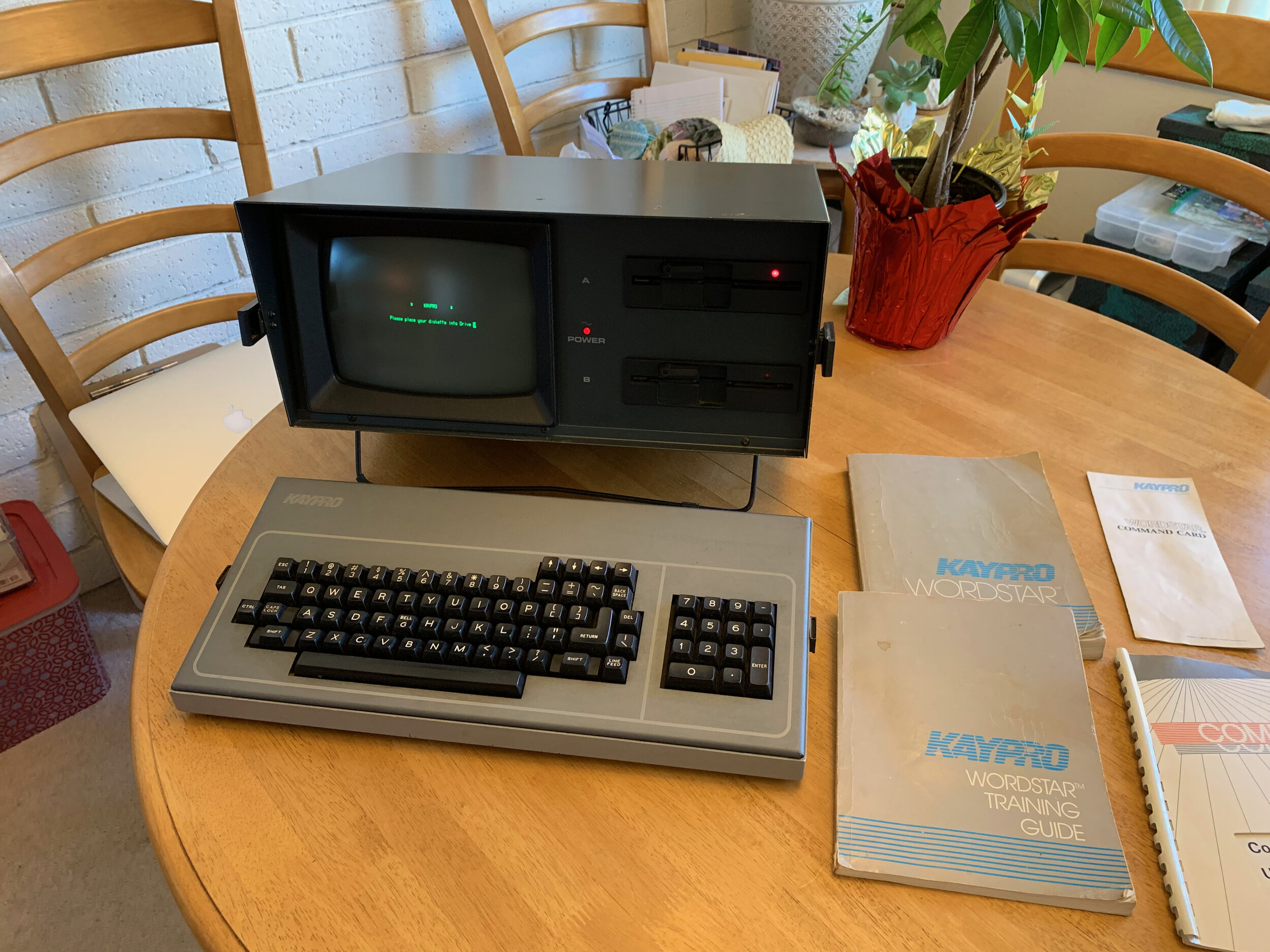
If Darth Vader had a portable computer, it might've been the Kaypro 4. An all-in-one computer (often described affectionately as a "luggable"), the Kaypro series of wall-powered portable computers were a big hit when they were introduced in 1981. This particular Kaypro 4 was donated by one of our visitors - the machine originally belonged to her father, who used it in his work as a speechwriter for Richard Nixon after he resigned the Presidency. The machine runs the "CP/M" operating system (an early competitor to Microsoft DOS), and while it was originally intended for serious business tasks, we have been happily surprised to discover that it is particularly popular with some of The Retro Roadshow's youngest visitors - they seem to love playing text-adventure games like Zork on its big keyboard and inviting green screen.
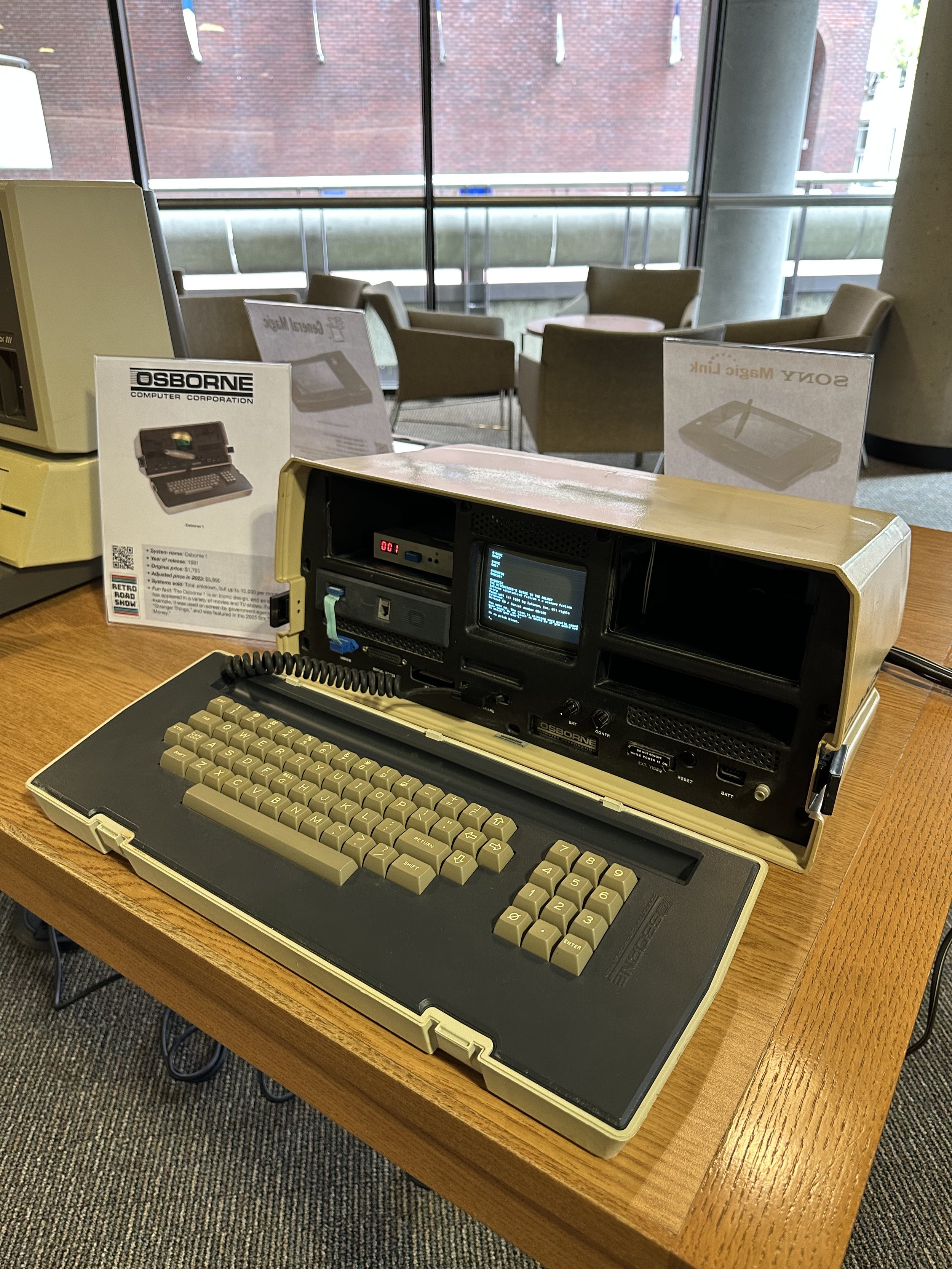
The Osborne 1 is the first commercially successful portable microcomputer, released in 1981 by Osborne Computer Corporation. Weighing in at a substantial 25lbs, this "luggable" computer sports dual low-density 5.25" floppy drives flanking an astonishingly-tiny 5" monochrome CRT display. The Osborne 1 was described as "a cross between a World War II field radio and a shrunken instrument panel of a DC-3 airliner," but despite its rather brutalist appearance, it earned the adoration of a generation of early portable-computing enthusiasts (who presumably had very good eyesight, given the tiny display). The Retro Roadshow is pleased to have 2 working Osborn 1's in the collection, with a third unit undergoing restoration now.
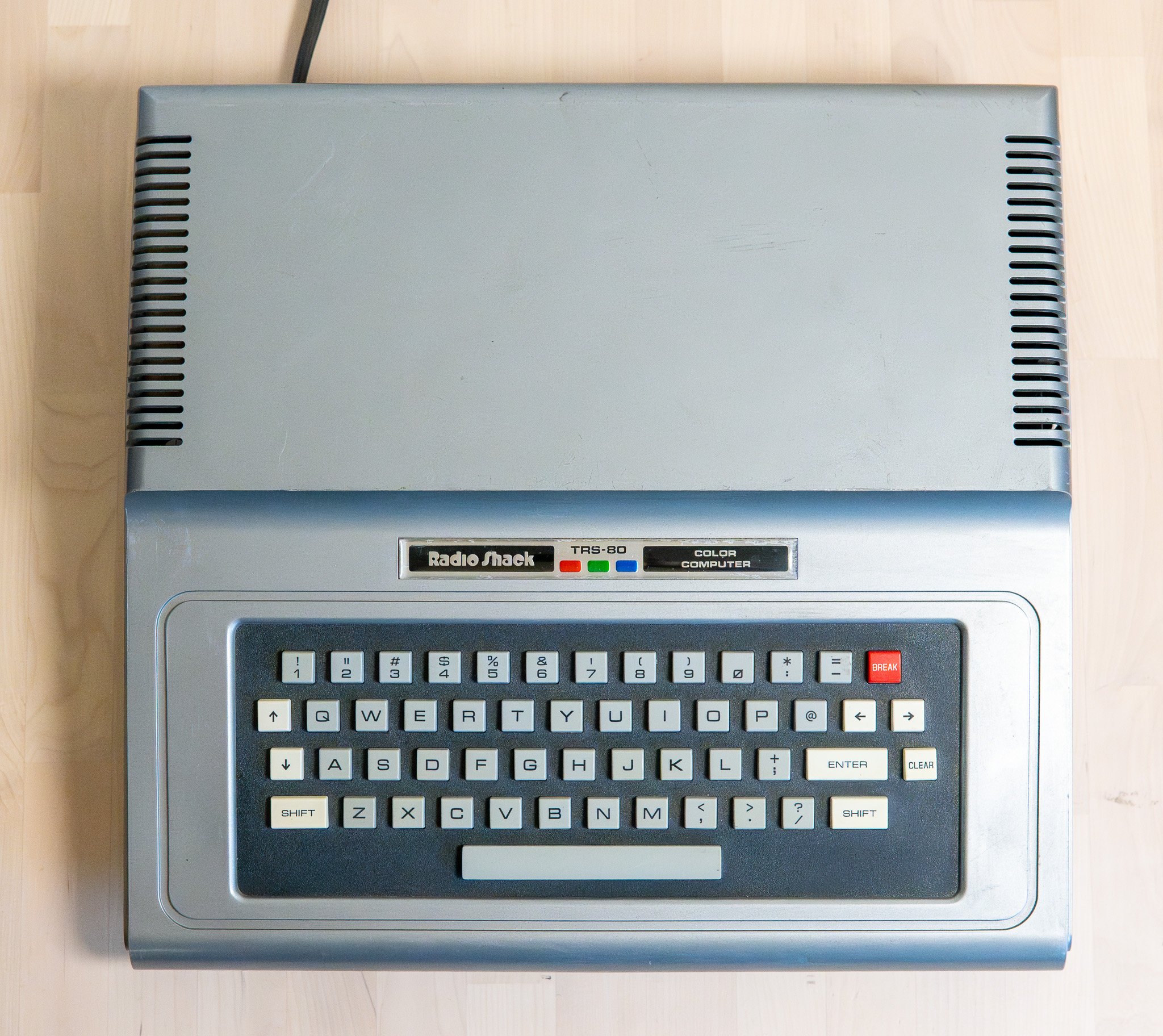
Released in September 1980, the TRS-80 Color Computer represented a major addition to Radio Shack's home computer line. Although it was initially marketed to the same business customers who had already embraced earlier machines in the TRS-80 line, the "CoCo" soon found a new niche: home users. The CoCo is a study in contrasts: color graphics and a sleek silver case evoking futuristic technology, paired with a "chiclet" keyboard so legendarily terrible that Radio Shack was soon forced to re-release the machine with a more traditional (and less painful) keyboard design. As one of the first computers owned by Retro Roadshow co-founder Huxley Dunsany (purchased at a San Francisco yard sale in 1994 for 25 cents), the CoCo helped kickstart the collection which we take so much delight in sharing with our attendees today!

The TRS-80 Model 100 is a portable computer introduced by Tandy Radio Shack in 1983. It is one of the first notebook-style computers, featuring a keyboard and liquid crystal display, in a battery-powered package roughly the size and shape of a notepad or large book. With a 2.4MHz CPU, RAM which could be expanded up to 32kb and built-in dial-up modem, the Model 100 was a powerful computer in its day. In particular, its rugged design and the fact that its ran on commonplace "AA" batteries quickly made it popular with reporters - they could write up their articles from virtually anywhere, and send the text to their editor from any working phone line. The Model 100 had several useful applications built into its ROM chips, and is believed to have been the last commercially-released computer for which Bill Gates personally wrote portions of the operating system code himself. The Model 100's sturdy design, surprising expandability and overall usefulness have resulted in a continuing fan-base which is still going strong over 40 years after its release. The Retro Roadshow is excited to help create a new generation of Model 100 fans through our hands-on exhibits.
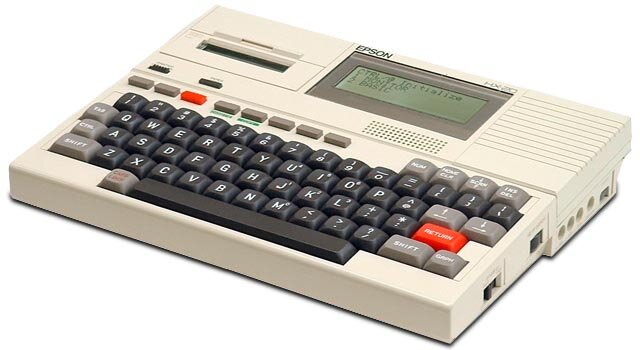
Released in 1982, the Epson HX-20 was the first true laptop computer. Designed around two Hitachi CPU's running at just over 0.6 megahertz, the HX-20 was not a speed demon even by the standards of the early 80's. However, its incredibly small size (considerably smaller than popular laptops sold more than a decade later), sharp built-in LCD screen, and integrated printer + cassette tape drive for storage made it a technological showcase. The Retro Roadshow is proud to have two working HX-20's in our collection for visitors to experience.
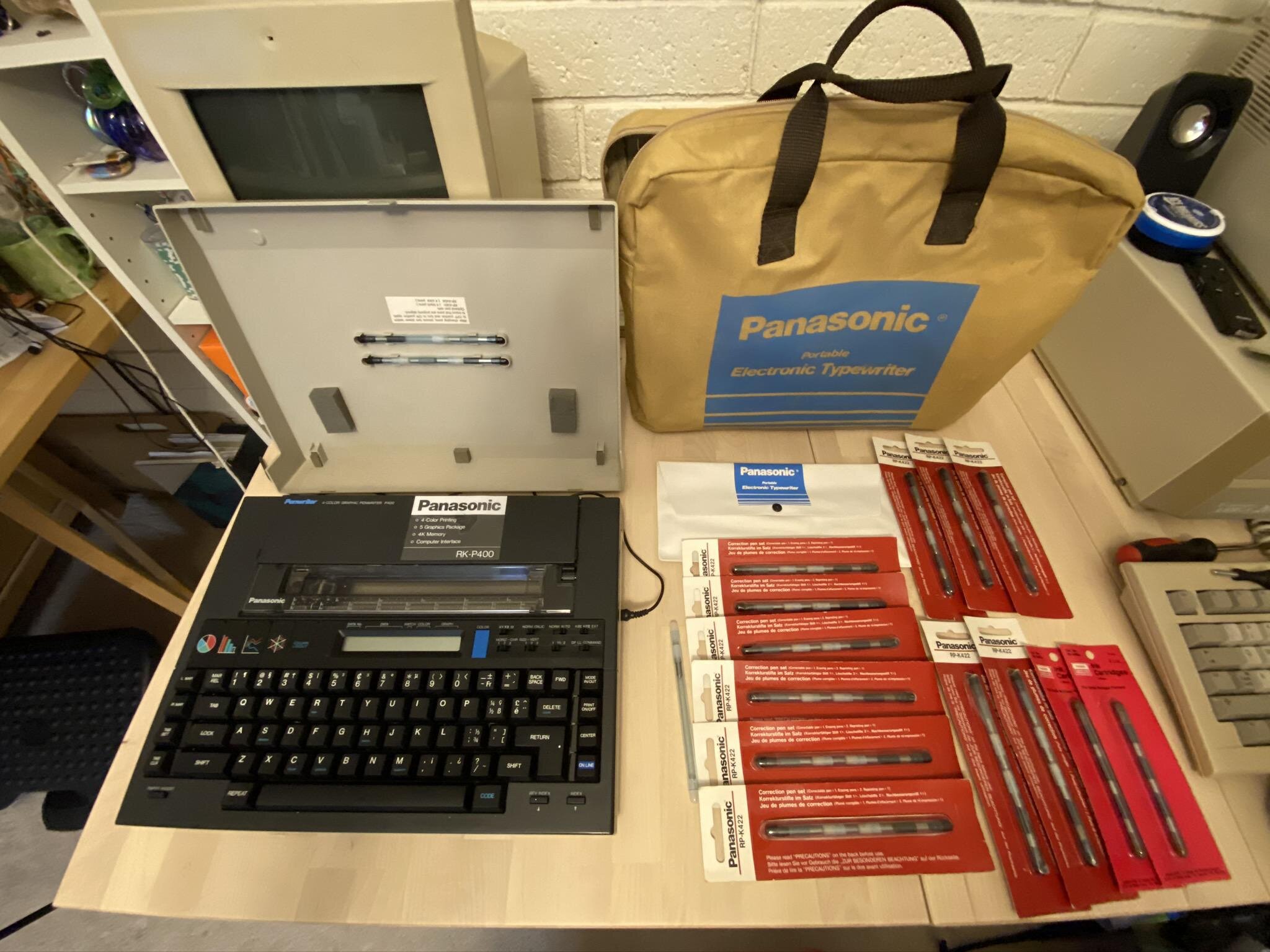
While not technically a standalone computer, the Panasonic Penwriter is certainly worthy of being both included in The Retro Roadshow, and being listed among these "oddballs." While it looks like a sleek typewriter (and was marketed as one), the Penwriter has a unique quirk: It's a battery-powered plotter! Unlike normal typewriters it does not 'stamp' letters onto the page, it literally writes them using tiny pens, allowing it to print text in different fonts - a trick seldom found in traditional typewriters. Originally conceived for the Japanese market where the 2,187 printed kanji characters made traditional typewriters of limited value, the Penwriter was a startling innovation. In English-speaking markets the value was reduced somewhat, but the pleasing typeface and ability to print mutli-color graphics with (or without) an attached computer made it a compelling option for students on a tight budget. The Retro Roadshow is pleased to have a well-equipped Penwriter in our collection.
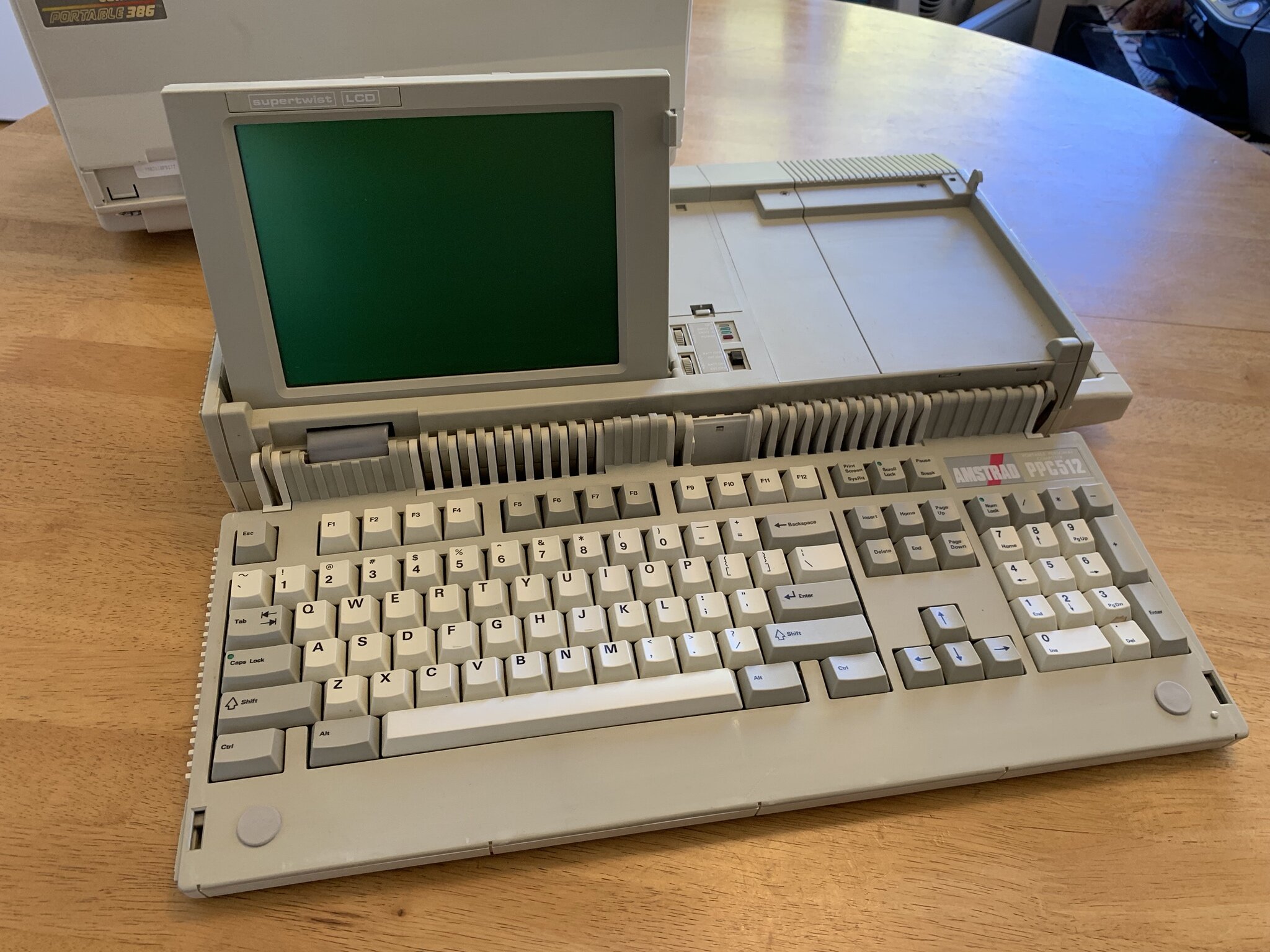
The Amstrad PPC512 is a fantastic example of the staggering variety that once existed in PC design. Incorporating a pop-up LCD screen with a full-size desktop-style keyboard into a portable computer which can run on 10 "C-cell" batteries, this early IBM-compatible portable machine is way too large to be called a laptop, but isn't quite a desktop either - it's in a category all its own, and certainly feels like an oddball.
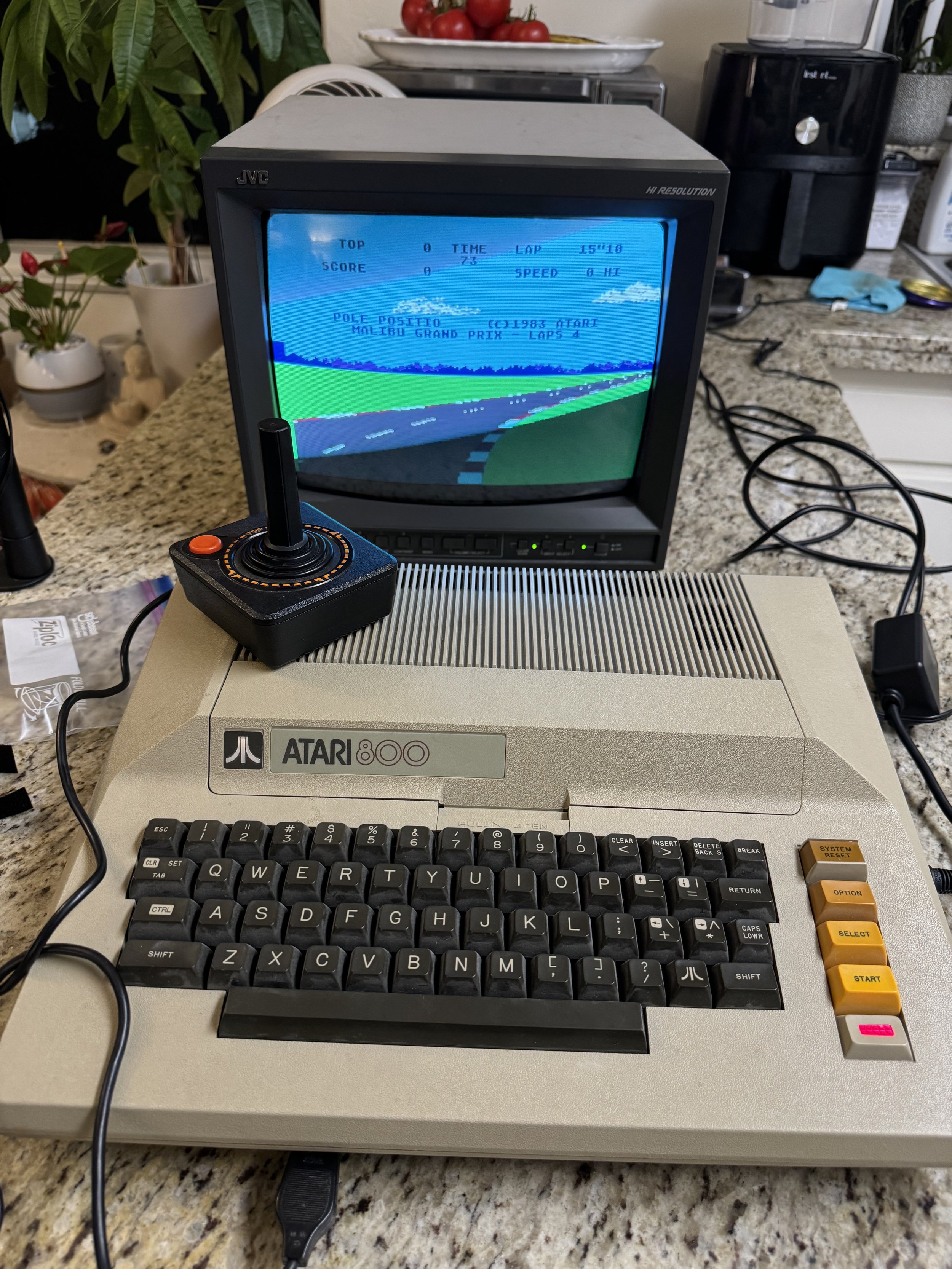
Although Atari is most remembered as the company which kicked off the home video game revolution, they were once a serious player in the market for home computers too. The Atari 800 was an incredibly compelling system when it debuted in 1979, offering far more sophisticated full-color graphics and audio capabilities than rivals like the Apple II and TRS-80 Model 1. Furthermore, the Atari 800 pioneered a variety of consumer-friendly design elements, including easily-attached external peripherals, and even the ability to expand the system's RAM by simply plugging in additional memory cartridges. The Retro Roadshow collection is home to several of these remarkable machines, including two which were lovingly upgraded by their original owner to include high-quality video output and internal solid-state storage.
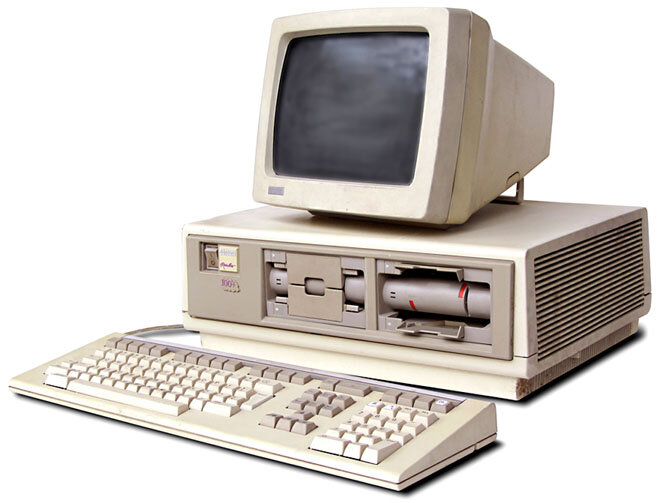
The "oddball" description is a good fit for the Rainbow 100, an early "hybrid workstation" from Digital Equipment Corp., aka "DEC." The Rainbow was released in 1982, at a moment of transition in the fledgling personal computer industry. For several years at that point, most "serious" businesses with desktop computers ran systems based on the Zilog Z80 CPU and it's most popular operating system CP/M. However, IBM had just made a huge splash with their Intel 8088-based, Microsoft DOS-running IBM PC, and IBM's dominance in the mainframe market was an early indication that they were likely to gobble up the market for business workstations. DEC, in an effort to cater to existing CP/M customers while also appealing to potential IBM buyers, decided to hedge their bets and designed this "beast with two brains" - a single desktop computer containing BOTH an Intel 8088 CPU *and* a Zilog Z80 CPU, each capable of running their respective operating systems at the same time. This strategy of putting one foot in the past and one foot in the future left the DEC Rainbow 100 on an unstable footing. Less-than-perfect IBM compatibility combined with shifting market interests to doom this incredibly complicated, wildly-overdesigned machine, and few are known to remain in good working order today. The Retro Roadshow is proud to have one in our collection.
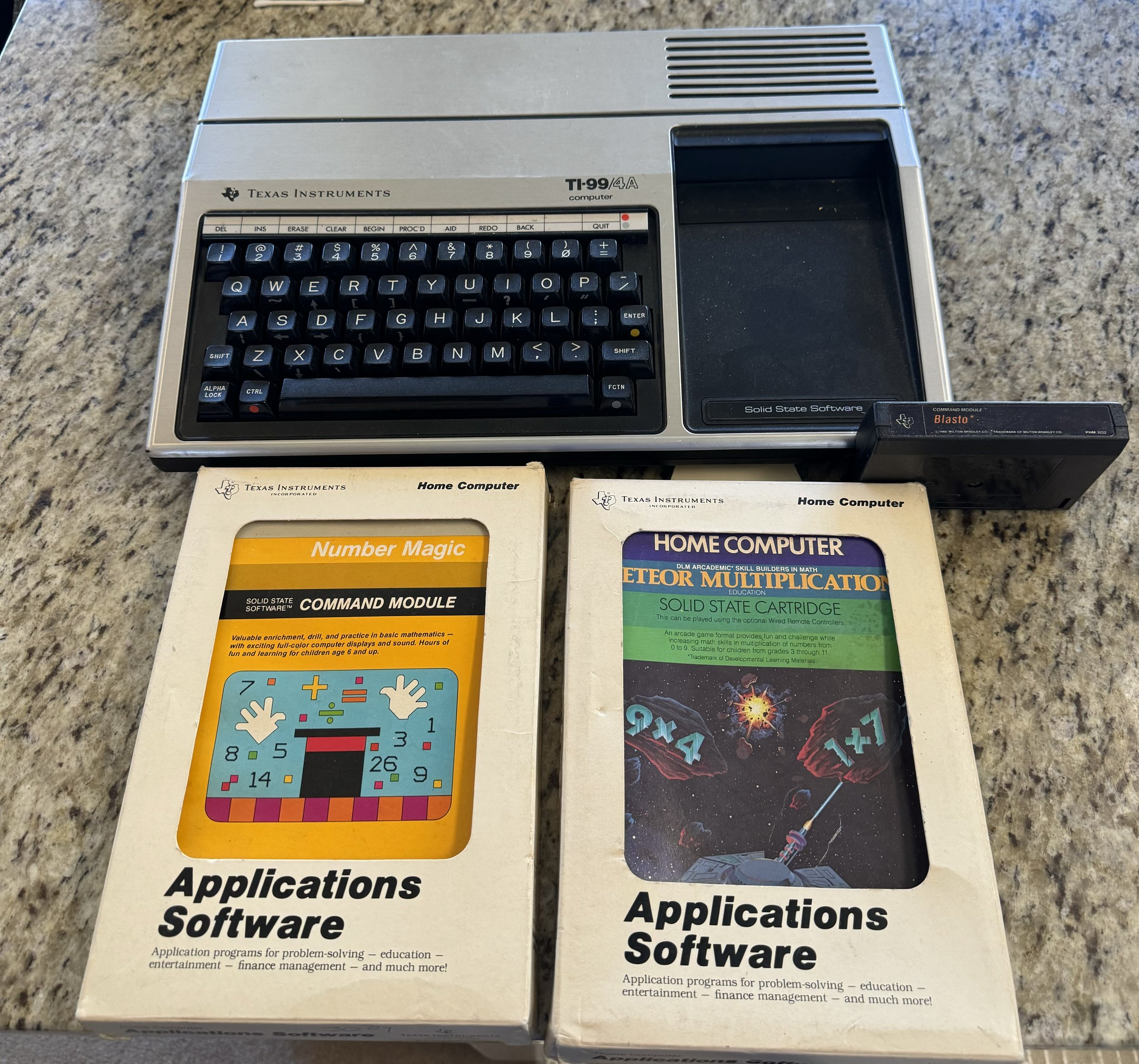
The successor to the earlier model 99/4, the Texas Instruments 99/4A added a much-improved keyboard, improved graphics capabilities, and enhanced expandability. Texas Instruments soon found itself losing a price-war with Commodore, and despite strong initial sales, TI was eventually forced to retire the whole product line. The Retro Roadshow is proud to have two functional 99/4A systems in our collection for visitors to experience!

Unveiled at a programmer convention in 2006, the Chumby was a groundbreaking concept: a commercially-released device with an open-source design, explicitly inviting owners to modify it in countless ways. This is the Chumby One, which (somewhat confusingly) was the second Chumby device when it debuted in 2009. Offering a touch-sensitive display, built-in WiFi and FM radio tuner, and an app ecosystem that predates those later found on iPhone and Android devices, the Chumby was a brilliant device in search of a purpose. Was it a radio? An alarm clock? A Twitter display? A toy? No one could quite figure it out, and after a failed partnership with Sony fizzled, the entire Chumby concept faded into obscurity. Nevertheless, the Chumby earned its place in history for presaging today’s thriving market for small, hackable devices like the Raspberry Pi.

Although The Retro Roadshow specifically focuses on offering the public access to original, authentic hardware and software, there are a handful of exceptions. For example, we gratefully accepted a donation of three modern replicas of historically-significant systems which are otherwise almost impossible for us to acquire: PDP-8 and PDP-11/70 "minicomputers," and the IMSAI 8080 microcomputer. These were lovingly built by a retired Silicon Valley engineer who had firsthand experience working on the original systems which inspired these replicas, and his attention to detail and exemplary craftsmanship shows through every blinking light and chunky toggle switch. Even though these are modern devices, they accurately replicate both the original software and hardware interfaces of the original machines, meaning that Retro Roadshow attendees can experience the fun of manually entering programs by flipping switches, or connecting remotely from a vintage terminal!